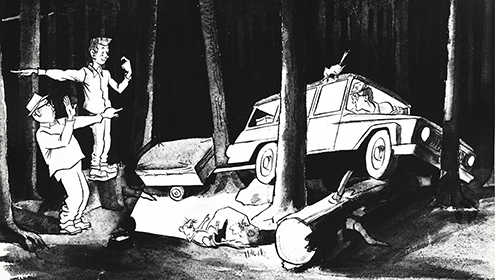
Glenn and Carol Wiggins’ estate furthers research in perpetuity
From a young age, Glenn Wiggins (1927–2013) was fascinated by “the little things that run the world.”* His love of insects led to a distinguished career as ROM curator of entomology and decades of global fieldwork on caddisflies—insects vital to freshwater food webs—on which he published four books and more than 100 articles in scientific journals.
“Glenn was an international authority in his field; I am also proud to call him my mentor,” says Doug Currie, Vice-President, Department of Natural History and Senior Curator of Entomology, ROM. “As an undergraduate student, I listened spellbound to his account of the caddisflies of Beringia in 1982, a region that would figure prominently in my own research on black flies.”
Family and colleagues recently dedicated the ROM’s new Wiggins Entomology Reading Room—a fitting tribute to Glenn, whose research is now fully digitized and accessible for future generations. The ROM is grateful to Glenn and his wife, Carol, for generously donating royalties from his books and a portion of their registered retirement income funds.
By establishing the Wiggins Entomology Trust Fund, Glenn and Carol will forever enable research in this field.
Leaving your legacy at the ROM: When people transfer wealth, retirement funds often present the biggest tax liability. Name the ROM as a contingent, primary or co-beneficiary of a portion or all of your registered retirement savings plans (RRSPs) or registered retirement income funds (RRIFs), and retain ownership and use in your lifetime while eliminating or greatly reducing estate and capital gains taxes. To donate to the Wiggins Entomology Trust Fund, establish a charitable ROM fund, or join the Currelly Legacy Society, please contact Janice Correa at janicec@rom.on.ca or 416.586.5578.
* Edward O. Wilson, “The Little Things That Run the World (The Importance and Conservation of Invertebrates),” Conservation Biology 1, no. 4 (December 1987): 344-346
